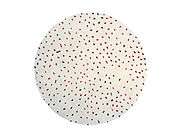Brucella
| Brucella | ||||||||||||
|---|---|---|---|---|---|---|---|---|---|---|---|---|
 | ||||||||||||
| Scientific classification | ||||||||||||
| ||||||||||||
| Species | ||||||||||||
|
B. abortus |
|
WikiDoc Resources for Brucella |
|
Articles |
|---|
|
Most recent articles on Brucella |
|
Media |
|
Evidence Based Medicine |
|
Clinical Trials |
|
Ongoing Trials on Brucella at Clinical Trials.gov Clinical Trials on Brucella at Google
|
|
Guidelines / Policies / Govt |
|
US National Guidelines Clearinghouse on Brucella
|
|
Books |
|
News |
|
Commentary |
|
Definitions |
|
Patient Resources / Community |
|
Directions to Hospitals Treating Brucella Risk calculators and risk factors for Brucella
|
|
Healthcare Provider Resources |
|
Causes & Risk Factors for Brucella |
|
Continuing Medical Education (CME) |
|
International |
|
|
|
Business |
|
Experimental / Informatics |
Overview
Brucella is a genus of Gram-negative bacteria.[1] They are small (0.5 to 0.7 by 0.6 to 1.5 µm), non-motile, encapsulated coccobacilli.
Brucella is the cause of brucellosis, a true zoonotic disease (i.e. human-to-human transmission has not been identified).[1] It is transmitted by ingesting infected food, direct contact with an infected animal, or inhalation of aerosols. Minimum infectious exposure is between 10 - 100 organisms. Brucellosis primarily occurs through occupational exposure (e.g. exposure to cattle, sheep, pigs), but also by consumption of unpasteurised milk products.
There are a few different species of Brucella, each with a slightly different presentation, such as B. melitensis, B. abortus, B. suis and B. citicosis.
Laboratory isolation
Brucella are slow-growing, but may be isolated from normal blood cultures using standard media. In traditional blood culture media, prolonged incubation (up to 6 weeks) may be required, but on modern automated machines the cultures often come positive within seven days. On Gram stain they appear as dense clumps of Gram-negative coccobacilli and are exceedingly difficult to see.
Laboratory acquired brucellosis is common.[2] This most often happens when the disease is not thought of until cultures become positive, by which time the specimens have already been handled by a number of laboratory staff. The idea of preventative treatment is to stop people who have been exposed to Brucella from becoming unwell with the disease.
There are no clinical trials to be relied on as a guide for optimal treatment, but a three week course of rifampicin and doxycycline twice daily is the combination most often used, and appears to be efficacious;[2][3] the advantage of this regimen is that it can be taken by mouth and there are no injections, however, a high rate of side effects (nausea, vomiting, loss of appetite) has also been reported.[3]
Blue light study
In a study published in Science magazine in August of 2007, it was revealed that Brucella reacts strongly to the presence of the blue spectrum in natural light, reproducing at a great rate and becoming infectious. Conversely, depriving Brucella of the blue wavelengths dropped its reproductive rate by 90%, a result one of the co-authors called "spectacular."[4][5]
Treatment
- Uncomplicated brucellosis in adults and children eight years of age and older [6]
- Preferred regimen: Doxycycline 100 mg PO bid for 6 weeks OR Tetracycline 500 mg every six hours orally administered for at least six weeks
- NOTE: Streptomycin 1 g/day intramuscularly administered for the first two to three weeks of therapy OR Gentamicin 5mg/kg/day intravenously or intramuscularly for 7-10 days in combination with Doxycycline administered for six weeks
- Alternative regimen (1): Doxycycline 200 mg/day orally AND Rifampicin 600–900 mg/day orally, both drugs administered for six weeks
- Alternative regimen (2): Fluoroquinolones
- NTOE: Quinolones should always be used in combination with other drugs, such as Doxycycline or Rifampicin
- Alternative regimen (3): TMP/SMZ in a fixed ratio of 1:5 (80 mg TMP/400 mg SMZ)
- NOTE: TMP/SMZ should always be used in combination with another agent, such as Doxycycline, Rifampicin or Streptomycin
- Complications of brucellosis
- Spondylitis
- Preferred regimen: Continuation of Doxycycline for eight weeks or more; Surgical drainage is rarely necessary.
- Neurobrucellosis
- Preferred regimen: Rifampicin OR Trimethoprim/sulfamethoxazole, be added to the standard regimen of Doxycycline AND Streptomycin for 6-8 weeks, and possibly longer, depending on the clinical response
- Brucella endocarditis
- Preferred regimen: Doxycycline AND an Aminoglycoside for at least eight weeks, and therapy should be continued for several weeks after surgery when valve replacement is necessary
- NOTE: Rifampicin OR Trimethoprim/sulfamethoxazole are used for their ability to penetrate cell membranes
- For children less than eight years of age
- Preferred regimen: TMP/SMZ 8/40 mg/ kg/day bid orally administered for six weeks AND Streptomycin 30 mg/kg/day once daily intramuscularly administered for three weeks OR Gentamicin 5 mg/kg/day once daily intravenously or intramuscularly administered for 7-10 days
- Alternative regimen (1): TMP/SMZ AND Rifampicin 15 mg/kg/day orally each administered for 6 weeks
- Alternative regimen (2): Rifampicin AND an Aminoglycoside
References
- ↑ 1.0 1.1 Ryan KJ, Ray CG (editors) (2004). Sherris Medical Microbiology (4th ed. ed.). McGraw Hill. ISBN 0-8385-8529-9.
- ↑ 2.0 2.1 Robichaud S, Libman M, Behr M, Rubin E (2004). "Prevention of laboratory-acquired brucellosis". Clin. Infect. Dis. 38 (12): e119–22. doi:10.1086/421024. PMID 15227634.
- ↑ 3.0 3.1 Maley MW, Kociuba K, Chan RC (2006). "Prevention of laboratory-acquired brucellosis: significant side effects of prophylaxis". Clin. Infect. Dis. 42 (3): 433–4. doi:10.1086/499112. PMID 16392095.
- ↑ "Deadly in the Daylight" August 23, 2007 in ScienceNOW Daily News. Accessed September 8, 2007.
- ↑ [http://www.sciencemag.org/cgi/content/abstract/317/5841/1090 "Blue-Light-Activated Histidine Kinases: Two-Component Sensors in Bacteria "], August 24 2007, Science Vol. 317:5841, pp. 1090 - 1093 Accessed September 8, 2007.
- ↑ Corbel, Michael (2006). Brucellosis in humans and animals. Geneva: World Health Organization. ISBN 9241547138.
External links